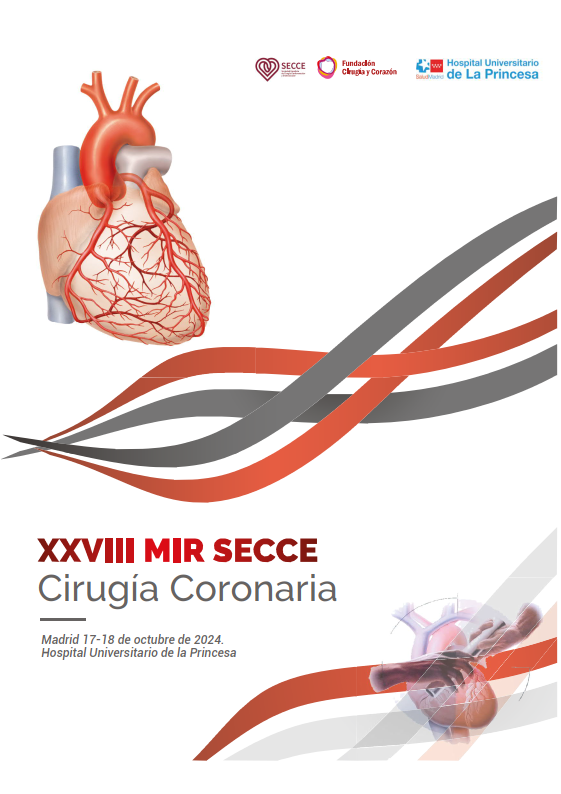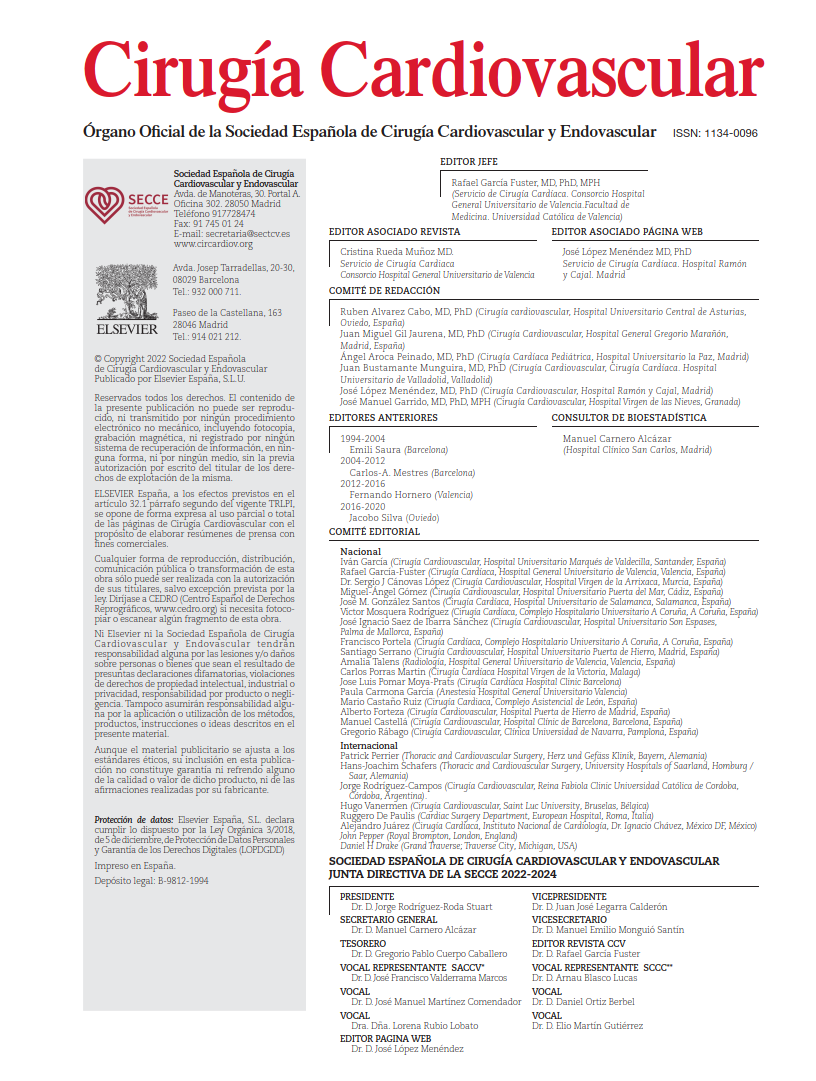Complete revascularization in patients with coronary artery disease has long been a guideline-supported and evidence-based recommendation. Whether achieved by percutaneous coronary intervention or CABG, it has been associated with fewer major cardiovascular events and improved long-term survival.
However, controversies persist regarding the definition, execution, and impact of complete revascularization in patients with multivessel disease undergoing CABG. Anatomical complete revascularization is often defined as the presence of at least one graft to each diseased coronary territory, regardless of the number of target vessels in each territory. This definition aligns with a simplified interpretation of the SYNTAX criterion, where any vessel suitable for revascularization must be >1.5 mm in diameter with a proximal stenosis >50%. This anatomic concept contrasts with the functional definition, which holds that one anastomosis per territory may suffice to treat multivessel disease. Even within this view, debate arises over whether to consider three or four territories—depending on whether the septal and anterior walls are grouped or treated separately—potentially omitting revascularization of diagonal branches. Additional complexity stems from defining what constitutes a target vessel based on its anatomical development and proximal lesion severity, with studies questioning the benefit of grafting intermediate lesions (50%–70% stenosis), particularly when this requires extending the use of saphenous vein grafts.
To address these uncertainties, Cho et al. took a step beyond conventional definitions, analyzing the long-term outcomes of grafting more than one distal anastomosis in the same coronary territory in patients with 3VD undergoing CABG.
This was a retrospective analysis of 1,859 patients who underwent isolated CABG between January 2008 and February 2021 at a university hospital in South Korea. Among them, 1,008 patients received off-pump coronary artery bypass grafting (OPCAB) and had anatomical complete revascularization, defined as at least one graft to each diseased territory. Patients with only three target vessels were excluded. Based on the number of distal anastomoses performed, patients were categorized into two groups: those with only three distal anastomoses (one per territory, 3D group) and those with more than three (MD group). Clinical variables, graft characteristics, postoperative course, and long-term outcomes (median follow-up, 86.6 months) were analyzed, with vital status confirmed via national health records and statistics. Statistical adjustment was performed using inverse probability treatment weighting (IPTW).
A total of 829 patients (82.2%) received more than three distal anastomoses (MD group), whereas 179 patients (17.8%) received only three (3D group). The mean age was 67 years. The most frequent comorbidities were hypertension (72.3%) and diabetes mellitus (55.2%), with no significant differences between groups. Operative mortality was low in both cohorts (1.0% in MD vs 1.1% in 3D), and no significant differences were observed in postoperative complications, including atrial fibrillation, acute kidney injury, respiratory complications, reoperation for bleeding, perioperative myocardial infarction, or stroke.
At 5 and 10 years, the all-cause mortality rates were 18% and 36%, respectively, while cumulative cardiac death rates were 5.2% and 9.2%. The MD group demonstrated significantly lower all-cause and cardiac mortality rates at both timepoints. Specifically, 10-year all-cause mortality was 34.9% in the MD group versus 41.9% in the 3D group, and cardiac mortality was 8.5% versus 12.0%, respectively. Multivariable analyses adjusted by IPTW confirmed that being in the MD group was independently associated with a significantly reduced risk of all-cause mortality (HR = 0.76; p = .047) and cardiac mortality (HR = 0.50; p = .007).
The authors concluded that performing more than one distal anastomosis in the same territory during CABG—beyond anatomic complete revascularization—may confer a long-term survival benefit and reduce the risk of cardiac death in patients with 3VD.
COMMENTARY:
This study prompts us to reconsider the “classic” definition of complete revascularization. For years, placing at least one graft per diseased coronary territory has been regarded as sufficient to improve prognosis in patients with multivessel coronary artery disease. However, Cho et al. propose a more ambitious approach: targeting not only one vessel per territory but all significantly diseased vessels, when technically feasible. Their results—demonstrating a reduction in both overall and cardiac mortality at long-term follow-up—support this more comprehensive strategy.
From a methodological standpoint, one of the study’s main strengths lies in the homogeneity of the cohort: all patients were treated at a single institution, under a consistent surgical strategy (off-pump CABG, or OPCAB), and with clearly defined inclusion criteria. This level of control minimizes variability and enhances the reliability of the findings. Additionally, the follow-up was extensive (median >7 years) and complete, allowing for robust assessment of long-term endpoints such as all-cause and cardiac mortality. The use of advanced statistical techniques such as inverse probability treatment weighting (IPTW) further supports the validity of the conclusions, as this method adjusts for baseline differences and mitigates the inherent biases of observational studies—bringing the findings closer to what might be expected in a randomized trial.
Nevertheless, the study has limitations. Being retrospective and single-center, selection biases and unmeasured confounding variables cannot be excluded. The decision to graft additional vessels was left to the discretion of the operating surgeon, limiting the generalizability of the results. Moreover, assessment of target vessels in the 3D group was done retrospectively by a single observer, which could have influenced patient classification. Importantly, the study did not include functional outcomes such as postoperative quality of life or functional capacity—metrics that are increasingly valued in modern cardiac surgery. Also, the results are limited to a specific technique (anaortic OPCAB with composite grafts) and may not apply to other surgical settings such as on-pump CABG or procedures using different arterial configurations.
Still, the key clinical message is both clear and relevant: when a patient with 3VD presents with more than one significant lesion per coronary territory, it may be beneficial to revascularize all eligible target vessels—especially when lesions exceed 70% stenosis. Conversely, other studies question this approach for intermediate lesions (50%–70%), further expanding the field for future investigation. Based on the present findings, this strategy does not increase operative mortality or early complications, and it is associated with improved long-term survival.
Ultimately, this work not only provides data but also challenges us to refine our understanding of complete revascularization. It highlights the ongoing evolution of coronary surgery and reminds us that even established techniques offer room for improvement. In selected patients, doing more may indeed make a meaningful difference.
REFERENCE:
Cho H, Kim JS, Kang Y, Sohn SH, Hwang HY. Impact of More Than 1 Distal Anastomosis on the Same Territory in 3-Vessel Disease Patients. Ann Thorac Surg. 2025 Mar;119(4):546-554. doi: 10.1016/j.athoracsur.2024.09.038. Epub 2024 Oct 11. PMID: 39396670



